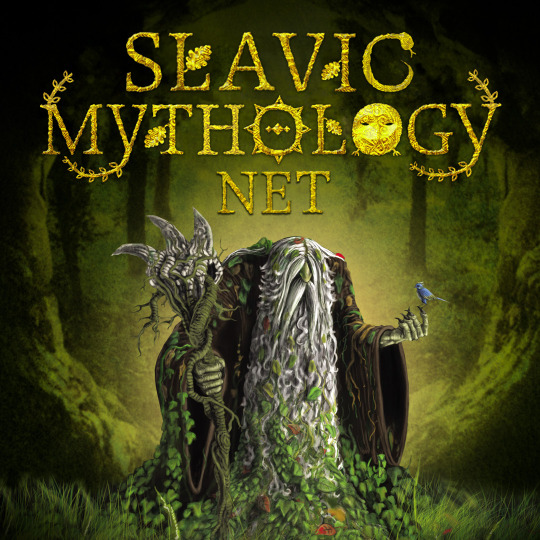Text

Father or Prince Christmas, carrying the Yule log, illustration from 1848. The personification of Christmas was part of the centuries-old European folkloric tradition of pre-Christian midwinter celebrations, associated with the Slavic god of the Sun and fire, as well as with counterparts in other religions, and with the burning of an oak log or sapling on each hearth to restore strength to the Sun and enter the period of its rise and the lengthening of the day. From 1780: “Here comes I, old Father Christmas, welcome or welcome not, I hope that old Father Christmas will never be forgot…”
#slavic mythology#mythology#classical mythology#folklore#slavic folklore#mythology and folklore#folk traditions#slavic culture#ancient wisdom#slavic mythology net#SlavicMythologyNet#mythical creatures#mythological creatures#mythical beings#mythological creature#fantasy creature#slavic tradition#slavic myths#myths and legends#slavic fantasy#legendary creature
61 notes
·
View notes
Text

Vampir is a Serbian word (one of the South Slavic languages) that entered most world languages after 1725 and Austrian and later German newspaper articles on vampirism that befell a Serbian village, the strange deaths of nine people in a short time, and the unearthing of the first vampire from his unsteady grave.
Stay tuned for more insightful bits of Slavic mythology in English (and many other languages soon on our website). 🔥
#slavic mythology#mythology#classical mythology#folklore#slavic folklore#mythology and folklore#folk traditions#slavic culture#ancient wisdom#slavic mythology net#SlavicMythologyNet#mythical creatures#mythological creatures#mythical beings#mythological creature#fantasy creature#slavic tradition#slavic myths#myths and legends#slavic fantasy#legendary creature
71 notes
·
View notes
Text

There are three types of dragon in Slavic mythology: the fiery dragon is a huge reptile with wings, a being that carries a fire inside him, as known in English. But, there is also a human form that is his descendant and ascendant, a human with great power, usually called dragonkin, some of which can even shapeshift into a dragon-like form and fly. The third form is the spirit dragon, the most unusual and most powerful of them all – this invisible essence willingly resides only in a special human who is unable to control it, and it is the only being that is able to confront the ancient beast that brings havoc upon men, while leaving the human body to fight its archenemy in the sky.
Stay tuned for more mythology bits. 🔥
#slavic mythology#mythology#classical mythology#folklore#slavic folklore#mythology and folklore#folk traditions#slavic culture#ancient wisdom#slavic mythology net#SlavicMythologyNet#mythical creatures#mythological creatures#mythical beings#mythological creature#fantasy creature#slavic tradition#slavic myths#myths and legends#slavic fantasy#legendary creature
73 notes
·
View notes
Text

Vila is the Slavic equivalent of a fairy, usually human-sized. Vile (plural) are always beautiful, eternally young women, with long hair in which lies all their magical power. These enchanting beings of nature can often fly and sometimes enter into brief relations with mortals, who are unable to hold onto them for long.
Stay tuned to read more intriguing bits of Slavic mythology in English (and many other languages soon on our website). 🔥
#slavic mythology#mythology#classical mythology#folklore#slavic folklore#mythology and folklore#folk traditions#slavic culture#ancient wisdom#slavic mythology net#SlavicMythologyNet#mythical creatures#mythological creatures#mythical beings#mythological creature#fantasy creature#slavic tradition#slavic myths#myths and legends#slavic fantasy#legendary creature
74 notes
·
View notes
Text

Why a .net domain for our website? To honor a quote from the upcoming book Slavic Mythology: “According to Greek records, the ancient Slavs were skillful shipbuilders and skilled sailors, always in contact with the water – proof of this can be found in the fact that the word denoting a net, the tool they used for fishing, is common to all Slavs, almost the same in most Slavic languages to this day.”
Stay tuned to read more intriguing bits of Slavic mythology in English (and many other languages soon on our website). 🔥
#slavic mythology#mythology#classical mythology#folklore#slavic folklore#mythology and folklore#folk traditions#slavic culture#ancient wisdom#slavic mythology net#SlavicMythologyNet#mythical creatures#mythological creatures#mythical beings#mythological creature#fantasy creature#slavic tradition#slavic myths#myths and legends#slavic fantasy#legendary creature
80 notes
·
View notes